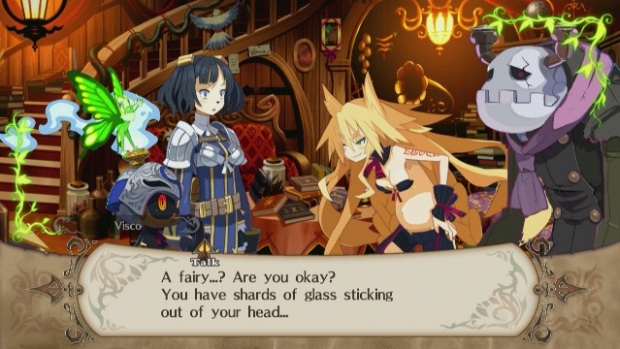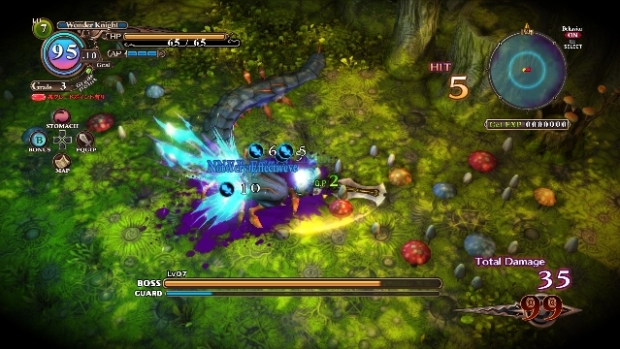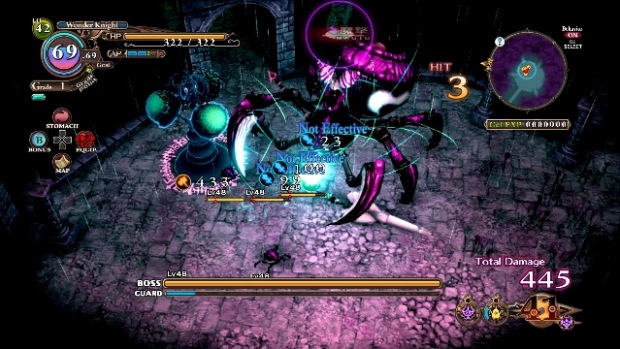The Witch & the Hundred Knight Review
Hack and Slash games are tricky to get right. The entire point of playing one is to find satisfaction and gratification in the repetitive demise of your foes. Smash. Squelch. Splat. If a hack and slash doesn’t nail its pummelling from the get-go, then it’s going to have a hard time cementing its appeal. The Witch and the Hundred Knight struggles, to say the least. A dungeon crawler Hack and Slash from the minds at NIS, a studio more famous for its comical Strategy RPG series Disgaea, The Witch and the Hundred Knight is a departure both in gameplay style and narrative tone, even if the artwork is of the same high quality as you’d expect.
That said, the game still puts an emphasis on its dialogue and tale, with the presentation being as typically slow as any other NIS game. Long story short (if only the game would adhere to that…), the titular Witch, name of Metallia, summons you, the Hundred Knight, into her world to help her kill other witches and activate swamp-spewing pillars. She’s a swamp witch, you see, and can only travel in swamp-land. And she wants to ruin the world with swamp. Because swamp. I jest, it’s because she’s going to die. Here’s a thing: nothing about The Witch and the Hundred Knight is simple. In terms of the narrative, plot elements are piled on top of one another, with many arbitrary elements and confuddling asides thrown in with reckless abandon.

It doesn’t help that the lead character, Metallia, is a disgusting and vile benefactor who commits some genuinely unforgivable acts of cruelty even in the opening chapter of the game. Some players will be able to get behind the mouth-y twiglet, but just as many will be put off the game entirely somewhere between the point when she boots a dying character in the gut, the bit when she turns said character into a mouse and summons some horny male mice to chase her down, and the part where said mouse is served as dinner.
Metallia is a terrifyingly abusive female lead; more squeamish and sensitive players won’t jive with her treatment of other characters and this may well mean that they find it impossible to play the game, what with you being a minion under her control. The game is trying to be darkly funny, and it has moments of clear comedy, but Metallia falls too far into needless cruelty far too often.
But there is a compelling game underneath the murky narrative, even if it takes too long to get going. Remember, nothing about The Witch and the Hundred Knight is simple. At the beginning of the game (after an overlong and plodding intro) you’ll be hammering attack a lot and relying on the Bayonetta-mimicking last-second-slow-mo-activating-dodge technique, but a while into the game you’ll have access to custom combos, summon-able Tochkas (minions), and you’ll be ofay with the complex language of the game’s combat. Much like Disgaea, The Witch and the Hundred Knight hides a plethora of complex systems under a fairly standard set up.

For example, you can set five weapons in a custom combo, but the way these weapons link will alter depending on the order. It’s also worth noting that different weapons have different properties, and different enemies have unique weaknesses, so experimentation is key. Speaking of experimentation, the Tochkas come in a huge variety of types, leading to some interesting tactics you can develop to deal with specific scenarios. And if worst comes to worst, you can goad enemies to attack each other, creating little AI battles you can laugh at from the side lines.
Experimentation really is the buzzword when it comes to The Witch and the Hundred Knight’s core gameplay. This is a game world that demands to be poked and prodded, flexed and teased. For those that can get invested in NIS’ unique onion style of game design(layers upon layers upon layers of ideas), there’s a lot to like and a lot to discover.
Not every idea really works, though, and that is always the risk of ambition. GCals, for example, are a “resource”’ that deplete as you explore, take damage or dash around, and your GCal meter will take a big dive should you “die”. This is meant to act as a meter to stunt hasty progression, but it’s too easy to simply dash through many of the environments, activating checkpoints and using the quick travel system to nip back to Metallia’s hut to restore your GCals to full. The risk/reward of staying in the level isn’t powerful enough to discourage that sort of cheeky tactic.

The Witch and the Hundred Knight’s handling of “classes” feels undercooked, too. You unlock new forms for the Hundred Knight as you play, with each altering his stats in a clear and defined way, but each time you unlock a new form it will start at lvl 1, creating a necessity to grind, or you could just stick with the default guise (which will likely be around lvl 7/8 when you unlock the first alternate class anyway).
But dwelling on these missteps ignores the good to be found. If you’re willing to forgive the slightly messy presentation and few lacking elements, The Witch and the Hundred Knight weaves a curious gameplay tapestry that focuses less on the appeal of the repetitive kill kill kill action of the dungeon crawl, and more on working out the optimal way to work with each individual enemy and group of foes.
VERDICT: As far as hack and slash titles go, The Witch and the Hundred Knight makes a horrible first impression – the story presentation is vulgar and the gameplay is initially lacking. But it’s a game that truly builds and builds into a freakishly beautiful abomination, should you give it enough time. It doesn’t do itself any favours – to be fair, NIS games rarely do – but if you don’t find Metallia too off-putting then there’s a compelling machine here, waiting for you to work it out.

GOOD. A game that scores 7/10 is worthy of note, but unworthy of fanfare. It does many things well, but only a few of them incredibly well and, despite a handful of good qualities, fresh ideas and solid mechanics, it fails to overwhelm.
Review code provided by publisher.




